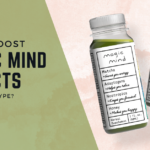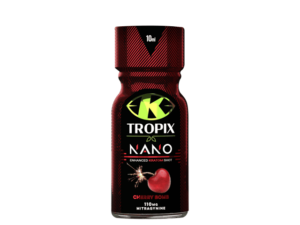Biohack Your Brainpower
Mold fungi are a fact of life.
While we humans dominate the globe, mold fungi live in the background and sneakily find their way into our lives.
Most people see mold as simply unsightly, recognizing it as a nuisance that merely needs cleaning like a dirty floor or something that grows on old bread.
However, mold toxicity is far more sinister.
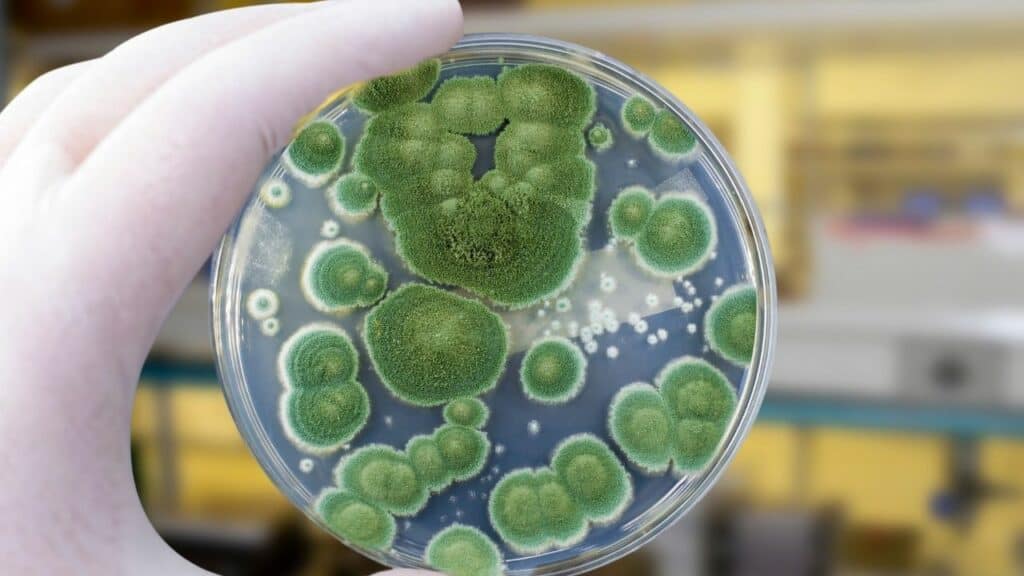
Consistent mold exposure can lead to many physical and cognitive health problems.
In the following article, we detail mold’s health impacts and what you can do to combat them.
Toxic Mold Exposure and The Brain

Mixed mold mycotoxicosis was a term coined for individuals exposed to various molds that exhibited a range of CNS, pulmonary, and immune system irregularities.1Michael R Gray, Jack D Thrasher, Robert Crago, Roberta A Madison, Linda Arnold, Andrew W Campbell, Aristo Vojdani, Mixed mold mycotoxicosis: immunological changes in humans following exposure in water-damaged buildings Arch Environ Health. 2003
Studies suggest that mold leads to the production of various mycotoxins that have inflammatory effects on the brain,
These effects eventually lead to declines in neuropsychological performance.2Frederick Fung , M.D., M.S. &Richard F. Clark , M.D., Health Effects of Mycotoxins: A Toxicological Overview Journal of Toxicology: Clinical Toxicology. 2003
While the exact mechanism causing the effect of mold exposure on the brain is not completely clear, a decline in cognitive ability has been observed in some individuals nonetheless.3Juliana V. Baldo,Laeeq Ahmad &Ronald Ruff, Neuropsychological Performance of Patients Following Mold Exposure Applied Neuropsychology. 2002
These patients showed various symptoms of mold exposure, including deficits in visuospatial learning, visuospatial memory, verbal learning, and psychomotor speed.
How Mold Spores Infect You?

Mold infection can be either airborne or foodborne.
During a mold testing study, 87.5% of the food present in refrigerators had some mold and bacteria in it.4Sema Sandikci Altunatmaz, Ghassan Issa, and Ali Aydin, Detection of airborne psychrotrophic bacteria and fungi in food storage refrigerators Braz J Microbiol. 2012
Mold is also found outdoors and can enter your house through doors, windows, and air conditioners. It particularly loves humid environments.
When these mold spores fall in moist or damp places, mold growth occurs and slowly starts poisoning the environment of the household.
Indoor mold colonies can be found anywhere around you, such as in vents, bathtub drains, and pretty much anywhere where there is a suitable moist environment for them to grow.
Types of Fungi
There are various types of fungi that, when consumed or inhaled, can cause multiple health problems.
Aspergillus
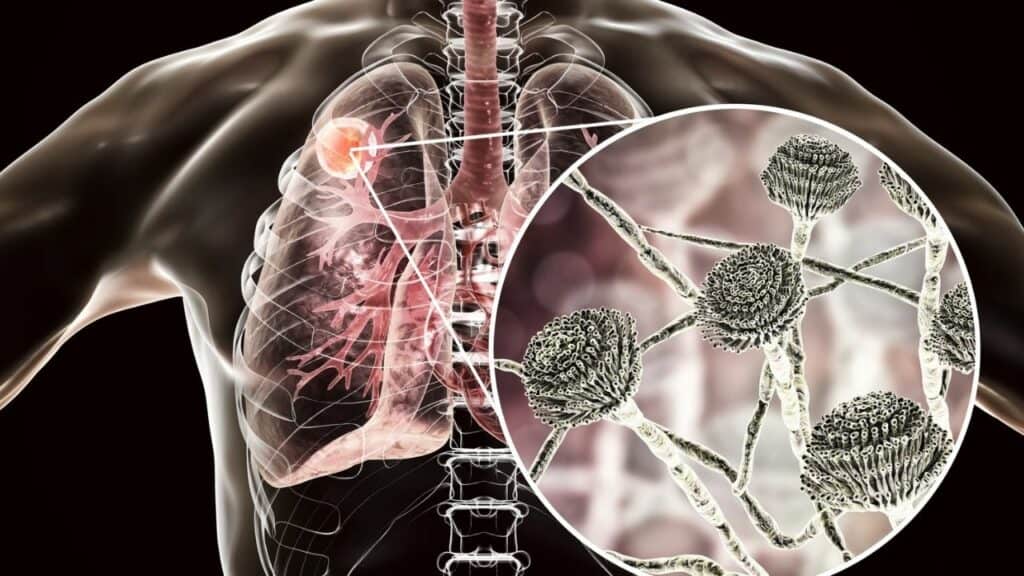
Aspergillus is a type of fungus that is found both indoors and outdoors.5B Mousavi, MT Hedayati, N Hedayati, M Ilkit, and S Syedmousavi, Aspergillus species in indoor environments and their possible occupational and public health hazards Curr Med Mycol. 2016
Many people don’t react to breathing in aspergillus spores every day. But in people with weaker immunity, it can cause allergic reactions.
Even if you don’t have severe reactions, more subtle symptoms may create inflammation that adds up over time.
Penicillium
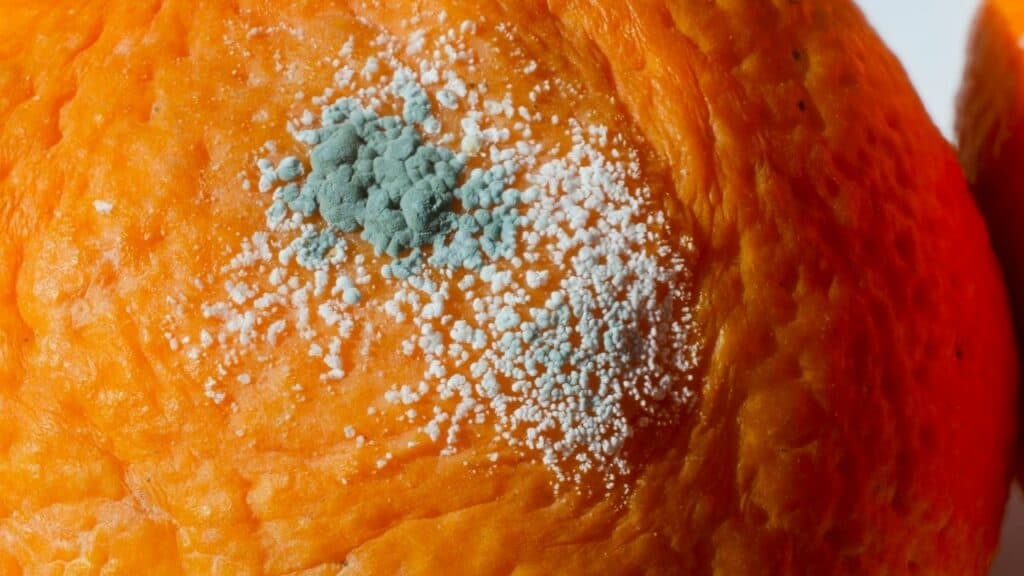
Penicillium is another type of fungus that can infect humans.
Penicillium toxicity can result in keratitis, pneumonia, endocarditis, endophthalmitis, otomycosis, pneumonia, endocarditis, urinary tract infections, etc.6Mary Augustina Egbuta, Mulunda Mwanza, and Olubukola Oluranti Babalola, Health Risks Associated with Exposure to Filamentous FungiInt J Environ Res Public Health. 2017
Stachybotrys (black mold)
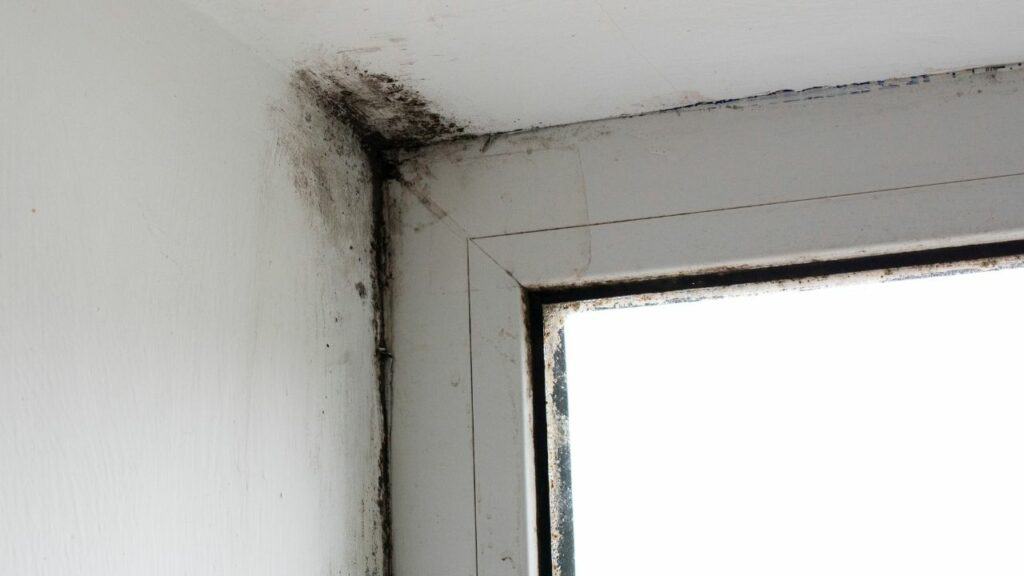
Stachybotrys (black mold) contamination can cause respiratory problems, coughing, nasal infections, and the central nervous system.7D. M. Kuhn1,2,3 and M. A. Ghannoum, Indoor Mold, Toxigenic Fungi, and Stachybotrys chartarum: Infectious Disease Perspective Clin Microbiol Rev. 2003
The name black mold is due to the blackish-green spores it forms.
Previously, black mold was perceived to be more dangerous. But it is as harmful as certain other mold species.
Ingestion of large amounts of Fusarium species of fungi leads to immune dysfunction and loss of intestinal health.8Author(s), The Impact of Fusarium Mycotoxins on Human and Animal Host Susceptibility to Infectious Diseases name of publication. YEAR
How Mycotoxins Infect You?
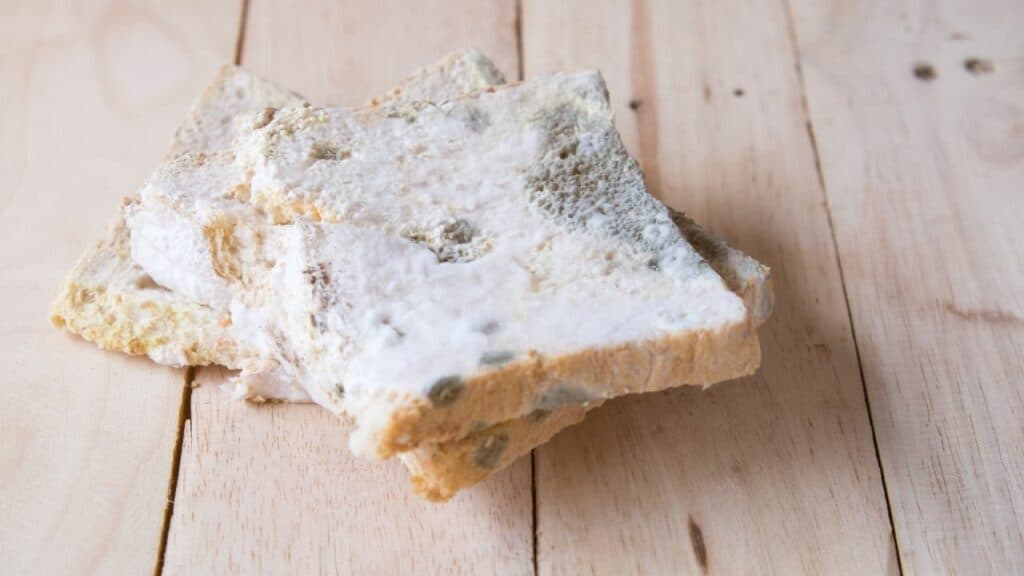
Mycotoxins are naturally occurring toxic substances that are produced as a result of mold exposure.
These are secondary metabolites of several fungal species that have adverse effects on human health.
The production of mycotoxins affects your brain function, causing cognitive disorders.
Mycotoxins cause the formation of inflammatory cytokines in the body.9Alix Pierron, Imourana Alassane-Kpembi, and Isabelle P. Oswald, Impact of mycotoxin on immune response and consequences for pig health Anim Nutr. 2016
Due to these cytokines, a cyclic inflammatory response is produced.
Genetic Predisposition of Mold Infection
Symptoms of mold exposure depend on the individual’s health, immunity, and genetic predisposition.10Joseph Pizzorno, ND, Editor in Chief and Ann Shippy, MD, Is Mold Toxicity Really a Problem for Our Patients? Part 2—Nonrespiratory Conditions Integr Med (Encinitas). 2016
Multiple people living in the same house exhibit different symptoms, even though they all have the same indoor exposure.
Sometimes, only one family member in a mold-infested home shows symptoms.
The reason for this different response is the HLA-DR gene.11Ville Valtonen, Clinical Diagnosis of the Dampness and Mold Hypersensitivity Syndrome: Review of the Literature and Suggested Diagnostic Criteria Front Immunol. 2017
25% of the population has missing or deficient HLA genes.
Such an individual experiences systemic inflammatory response and multiple chronic symptoms even after you remove mold from their environment.
Most Common Types Of Mycotoxins
The most common types of mycotoxins are mainly produced by mold types Aspergillus, Penicillium, and Fusarium.
These include Ochratoxin A, Aflatoxins, Gliotoxins, Trichothecenes, Zearalenone, and Fumonisins.
Aflatoxins are common Aspergillus mycotoxins. Intake of aflatoxin mainly results in liver diseases.

Trichothecenes and Zearalenone are Fusarium mycotoxins. These affect livestock by causing infertility, reducing milk production, diarrhea, and other dysfunctions.
Ochratoxin A and Gliotoxins are produced by Penicillium and Aspergillus species. They enter the human body through the intake of contaminated food.
Fumonisins are mycotoxins of the Fusarium species and usually contaminate corn.12P G Thiel, W F Marasas, E W Sydenham, G S Shephard, W C Gelderblom, J J NieuwenhuisAUTHORS INFO & AFFILIATIONS, Survey of fumonisin production by Fusarium species ASM Journals. 1991
How To Spot Mold Growth?
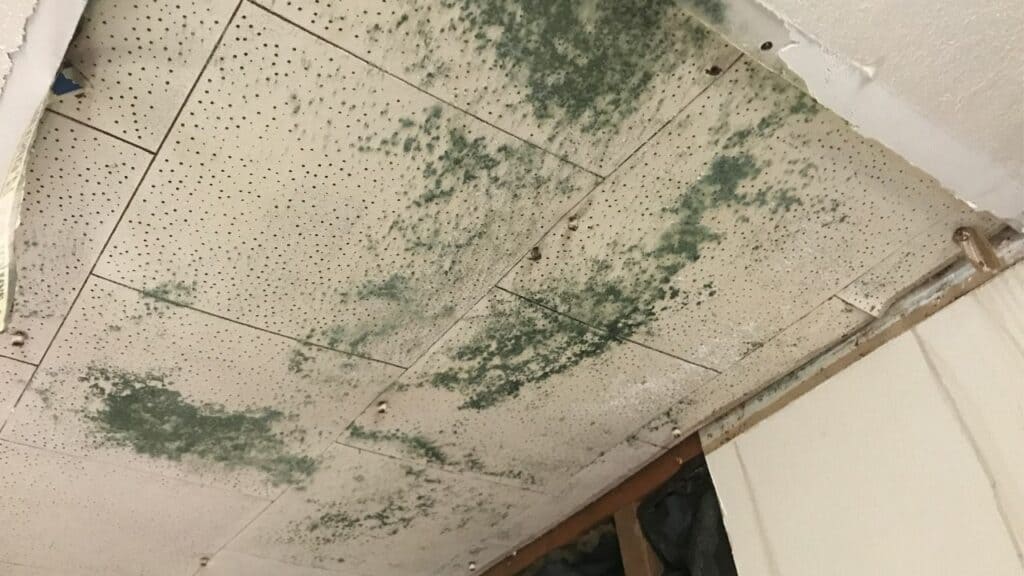
Mold can grow in multiple spots in your house.
Look for black spots in damp places.
It would be best if you also kept an eye on your plumbing. If there is any leak in the pipes, there is a possibility of mold growth there.
Your bathroom is a common site for mold growth.
In a bathroom, there is optimal heat and moisture for their development.
To prevent mold growth, replace mold-infested surfaces, ceiling tiles, carpet walls, etc., within 24 to 48 hours.
Common Mold Toxin Symptoms
Fungi can affect your physical health in two ways.
Some people suffer from mold allergies, while others experience toxicity. Both of these are not the same illness. They are different from each other.
Mold Allergies

Mold allergies refer to allergy symptoms caused by spores. These include respiratory symptoms like shortness of breath, nasal congestion, obstruction of the respiratory tract, itchiness, rashes, wheezing, cough, hay fever, etc.
If you have mold allergies, exposure to a few spores can trigger your allergy fast, resulting in coughing and sneezing. Allergy shots can help such individuals greatly.
If you are not allergic to mold spores, a one-time mold exposure might not affect you.
But inhaling spores for more extended periods can increase your risk of mold toxicity and chronic illness.
Mold Toxicity

On the other hand, mold toxicity is caused by the volatile vapors of mold.
Common symptoms include coughing, wheezing, headaches, dizziness, fatigue, chronic inflammation, skin issues, breathing difficulties, sneezing, and GI infections.
Those with HIV/AIDS are at a higher risk of systemic infections.
Similarly, people with weakened immune systems experience mold toxicity more often than healthy individuals.
Chronic Inflammatory Response Syndrome (CIRS)
Exposure to mold toxins for a long time results in a permanent mold injury with more severe symptoms. Mold illness is another name for this disease.
CIRS triggers immunity irregularities and systemic inflammation.
Due to its diverse symptoms, it is frequently misdiagnosed as an autoimmune disorder.
Mold illness should be included in the differential diagnosis of various diseases, including multiple sclerosis, Lyme’s disease, rheumatoid arthritis, leaky gut, irritable bowel syndrome, chronic fatigue syndrome, etc.
Symptoms of mold illness (CIRS) are following:
- ENT symptoms (hearing loss, sinus/nasal congestion, nose bleeds, nasal polyps, raspy voice, sore throat)
- Vision problems
- Digestive issues
- Skin issues
- Respiratory issues (difficulty breathing, cough, wheezing, asthma)
- Muscle cramps
- Abdominal pain
- Joint pain
- Heart issues
- Irritability and mood swings
- Persistent Cough with phlegm
- Unexplained weight gain
Mental Issues Associated With Mold Exposure
Aside from its physical symptoms, mold can also affect your mental health and exhibit psychiatric symptoms.
Brain Fog
People suffering from toxic mold illnesses have anxiety, depression, brain fog, concentration problems, and in some cases, insomnia.
Mold intake is similar to bacterial infection, where an immune response is generated, resulting in behavioral dysfunction.
Children exposed to mold also suffer from cognitive disorders and indicate neurological deficits.13Ebere C. Anyanwu, Andrew W. Campbell, and Aristo Vojdani, Neurophysiological Effects of Chronic Indoor Environmental Toxic Mold Exposure on Children The Scientific World Journal. 2003
Depression and Anxiety

In a study, researchers examined 31 individuals affected by mold.
Most of them had cognitive impairment with reduced memory and other executive functions. This reduced cognitive ability was related to depression and anxiety.14Wayne A. Gordon,Joshua B. Cantor,Eckardt Johanning,Heather J. Charatz,Teresa A. Ashman,Janis L. Breeze, Cognitive Impairment Associated With Toxigenic Fungal Exposure: A Replication and Extension of Previous Findings Applied Neuropsychology. 2004
It is not known whether the depression and anxiety caused by mold are due to the mold itself or due to the stress of trying to keep your house clean in the middle of constant mold infestation.
The possible hypothesis is that the mold growth in the house can be a cause of anxiety.
Memory Dysfunction
Mold mycotoxins cause brain inflammation, especially in the hippocampus.
As the hippocampus is associated with memory and learning abilities, damage to that part of the brain influences learning abilities and memory functions.
Disruption in Sleep Cycle

It also disrupts the sleep cycle of the patient. Confusion, disorientation, and pain sensitivity are also enhanced.
Mold also decreases the formation of new neurological cells.
Apart from the above symptoms, mold can also cause a significant reduction in libido.
Diagnosing Mold Toxicity
Mold poisoning is generally diagnosed based on symptoms and history taken from the patient.
- To identify a mold allergy, a skin prick test is done in which the patient is administered dilute amounts of the allergen, and a bump appears on the skin in case of an allergy.
- The doctors also take a blood sample to determine the immune system’s response to mold. They may ask you for further testing if the blood test result is not conclusive.
- A standard method used to detect mold toxicity is to take a urine mycotoxin test; this gives a complete picture of mold and mycotoxins in the body.
- The Great Plains’ mycotoxin test uses liquid chromatography-mass spectrometry technology, which gives the mycotoxin profile of the body.15The Great Plains, MycoTOX Profile greatplainslaboratory
- This test can detect 11 different types of mycotoxins from 40 species of mold.
- Home tests like EMMA are also performed, where small amounts of dust samples are taken from different parts of the house to test for mold and mycotoxins.
Addressing Mold Illness
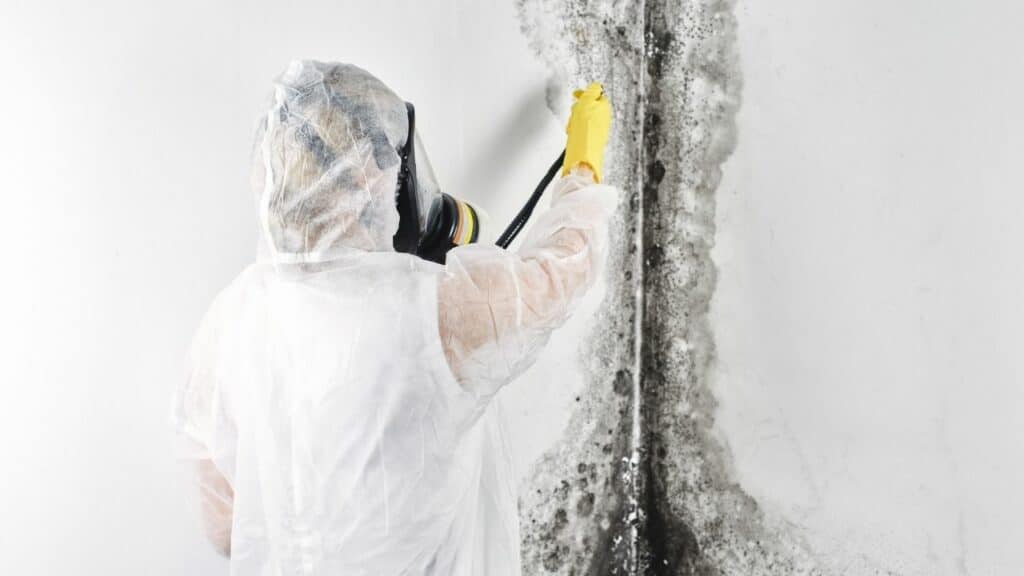
Mold is beyond being just a physical disease; it has adverse mental and psychological effects.
The first step in addressing mold is identifying the source and removing it.
It could be growing in your pipes, walls, leaks, sinks, bathtubs, and air conditioning units.
You can identify fungus by its earthy smell and particular stain.
You need to check all these places where there is a possibility of mold growth and deep clean these areas.
Treatment of Mold Toxicity
To tackle the mold problem, you need first to get rid of the moldy environment.
HEPA filters are quite effective in removing mold.
If you suffer from frequent mold-allergic symptoms, a HEPA filter can put an end to them.
Raw garlic, chlorophyll, and activated charcoal are natural antidotes for mold remediation.
Infrared sauna therapy is also an effective way to heal your body from the trauma of mold toxicity.
Binders
Mycotoxins present in your body are excreted through bile.
Binders prevent the reabsorption of these mycotoxins back into the intestines by coupling with them.
They help to eliminate mycotoxins from the body through the feces.
- Chitosan is a mold detox binder derived from shellfish and helps heal the toxic effects of mold.
- Chlorella is blue-green algae that also bind mycotoxins.
- Bentonite clay works as a great detox, especially for the aflatoxin species.
Just take these binders 30-60 minutes before eating the food 3-4 times a day, and you are good to go.
Supplements

Supplements are very effective in restoring your gut health and supporting your immune system.
- MegaCidin is a great supplement to help your body recover from the adverse effects of mold.
- NAC/Glutathione detoxifies your body of mold and can help you recover from the mold toxicity symptoms.
Mold is a huge issue in many houses, but proper hygiene and cleanliness can significantly reduce its occurrence and growth.
- 1Michael R Gray, Jack D Thrasher, Robert Crago, Roberta A Madison, Linda Arnold, Andrew W Campbell, Aristo Vojdani, Mixed mold mycotoxicosis: immunological changes in humans following exposure in water-damaged buildings Arch Environ Health. 2003
- 2Frederick Fung , M.D., M.S. &Richard F. Clark , M.D., Health Effects of Mycotoxins: A Toxicological Overview Journal of Toxicology: Clinical Toxicology. 2003
- 3Juliana V. Baldo,Laeeq Ahmad &Ronald Ruff, Neuropsychological Performance of Patients Following Mold Exposure Applied Neuropsychology. 2002
- 4Sema Sandikci Altunatmaz, Ghassan Issa, and Ali Aydin, Detection of airborne psychrotrophic bacteria and fungi in food storage refrigerators Braz J Microbiol. 2012
- 5B Mousavi, MT Hedayati, N Hedayati, M Ilkit, and S Syedmousavi, Aspergillus species in indoor environments and their possible occupational and public health hazards Curr Med Mycol. 2016
- 6Mary Augustina Egbuta, Mulunda Mwanza, and Olubukola Oluranti Babalola, Health Risks Associated with Exposure to Filamentous FungiInt J Environ Res Public Health. 2017
- 7D. M. Kuhn1,2,3 and M. A. Ghannoum, Indoor Mold, Toxigenic Fungi, and Stachybotrys chartarum: Infectious Disease Perspective Clin Microbiol Rev. 2003
- 8Author(s), The Impact of Fusarium Mycotoxins on Human and Animal Host Susceptibility to Infectious Diseases name of publication. YEAR
- 9Alix Pierron, Imourana Alassane-Kpembi, and Isabelle P. Oswald, Impact of mycotoxin on immune response and consequences for pig health Anim Nutr. 2016
- 10Joseph Pizzorno, ND, Editor in Chief and Ann Shippy, MD, Is Mold Toxicity Really a Problem for Our Patients? Part 2—Nonrespiratory Conditions Integr Med (Encinitas). 2016
- 11Ville Valtonen, Clinical Diagnosis of the Dampness and Mold Hypersensitivity Syndrome: Review of the Literature and Suggested Diagnostic Criteria Front Immunol. 2017
- 12P G Thiel, W F Marasas, E W Sydenham, G S Shephard, W C Gelderblom, J J NieuwenhuisAUTHORS INFO & AFFILIATIONS, Survey of fumonisin production by Fusarium species ASM Journals. 1991
- 13Ebere C. Anyanwu, Andrew W. Campbell, and Aristo Vojdani, Neurophysiological Effects of Chronic Indoor Environmental Toxic Mold Exposure on Children The Scientific World Journal. 2003
- 14Wayne A. Gordon,Joshua B. Cantor,Eckardt Johanning,Heather J. Charatz,Teresa A. Ashman,Janis L. Breeze, Cognitive Impairment Associated With Toxigenic Fungal Exposure: A Replication and Extension of Previous Findings Applied Neuropsychology. 2004
- 15The Great Plains, MycoTOX Profile greatplainslaboratory


